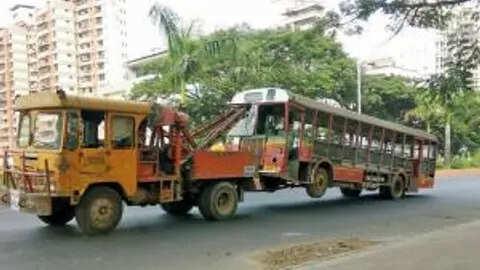
A city where 56% of the population relies on buses for daily commute, is facing a potential transportation crisis: half of its privately-owned bus fleet is set to be scrapped this year after completing 15 years in service. With only 26 new buses purchased by private operators this year, there is a significant shortfall between demand for public transportation and supply.
The impact of diminishing bus fleet is being felt for the past few years with over 400 buses being withdrawn annually. “If so many buses suddenly stop plying, the impact will be telling. Unlike Mumbai, a train city, Kolkata is a bus city. Mobility of citizens is bound to be crippled,” said A K Das, a former chief traffic and transportation engineer.
Currently, 3,500-odd private buses operate in Kolkata, a significant drop from the 6,000 that were in service before the 2020 Covid pandemic.
The decline is primarily attributed to viability issues as bus fares were last revised in 2018. While bus operators have informally revised fares, most believe such an informal system is unlikely to instil confidence in investors to purchase new buses to fill the void. “Who knows when the govt will suddenly crack down on operators for this revised fare, which is illegal but done for the sake of survival,” said an operator on route 12C.
Anumita Roychowdhury, executive director of Centre for Science and Environment and a transport expert said, “There are telltale signs of the weakening of public transport system, which received a body blow during the pandemic. It is a pity that Kolkata, which boasts a robust and reliable public transport system, has been weakening so fast.”
Since 2008, following a Calcutta High Court order, all commercial vehicles that have been in service for 15 years have to be scrapped due to higher levels of toxic emission. As 90% of commercial vehicles, including buses, are diesel-powered, they release as many as 24 carcinogenic components in their exhaust fumes.
The decline in the number of buses has led to a significant increase in the use of personalised modes of transport, like four- and two-wheelers, resulting in clogging of road space and posing daily challenges to the city traffic police.
“As buses are thinning in numbers, I am spending nearly four times that of my commute cost in pre-pandemic days. I am using autos, often hiring bike cabs snd saving less,” said Bikas Santra, an insurance agent.
Traffic and transport planning experts say the city’s focus has shifted from mass transit to a car-centric transit policy. Gour Krishna Ghosh, a transport planning expert, explained, “We have built elevated corridors which eat into the carriageway. The elevated corridors mainly serve the car population. So by building flyovers and elevated corridors, we are facilitating faster movement of cars at the cost of public transport below on the congested road space. Thus, we are encouraging cars and discouraging the bus system, which has always been the backbone of the city’s transportation.”

